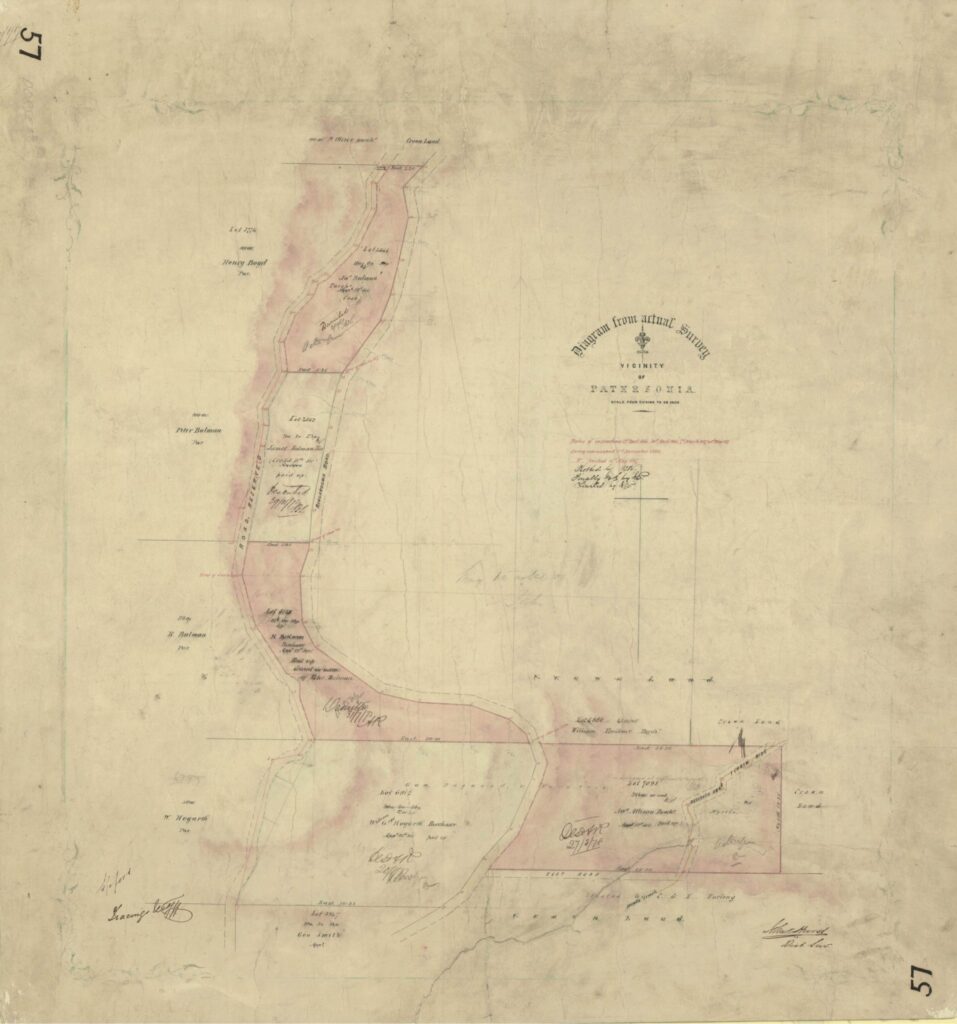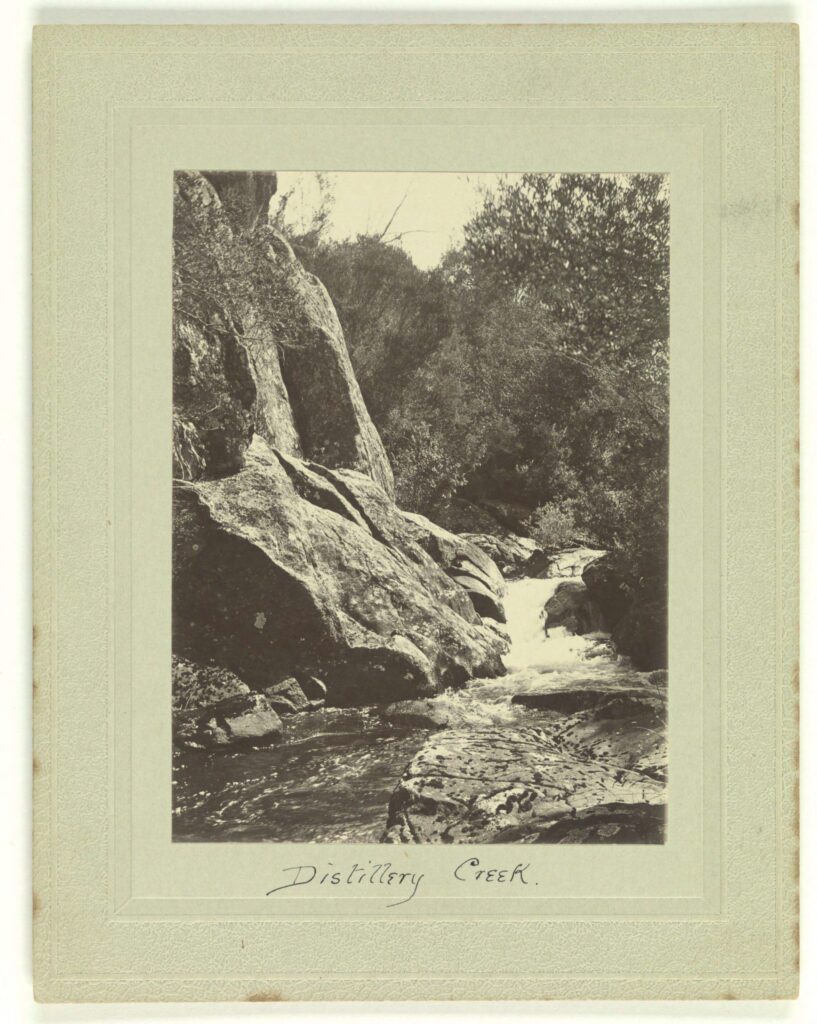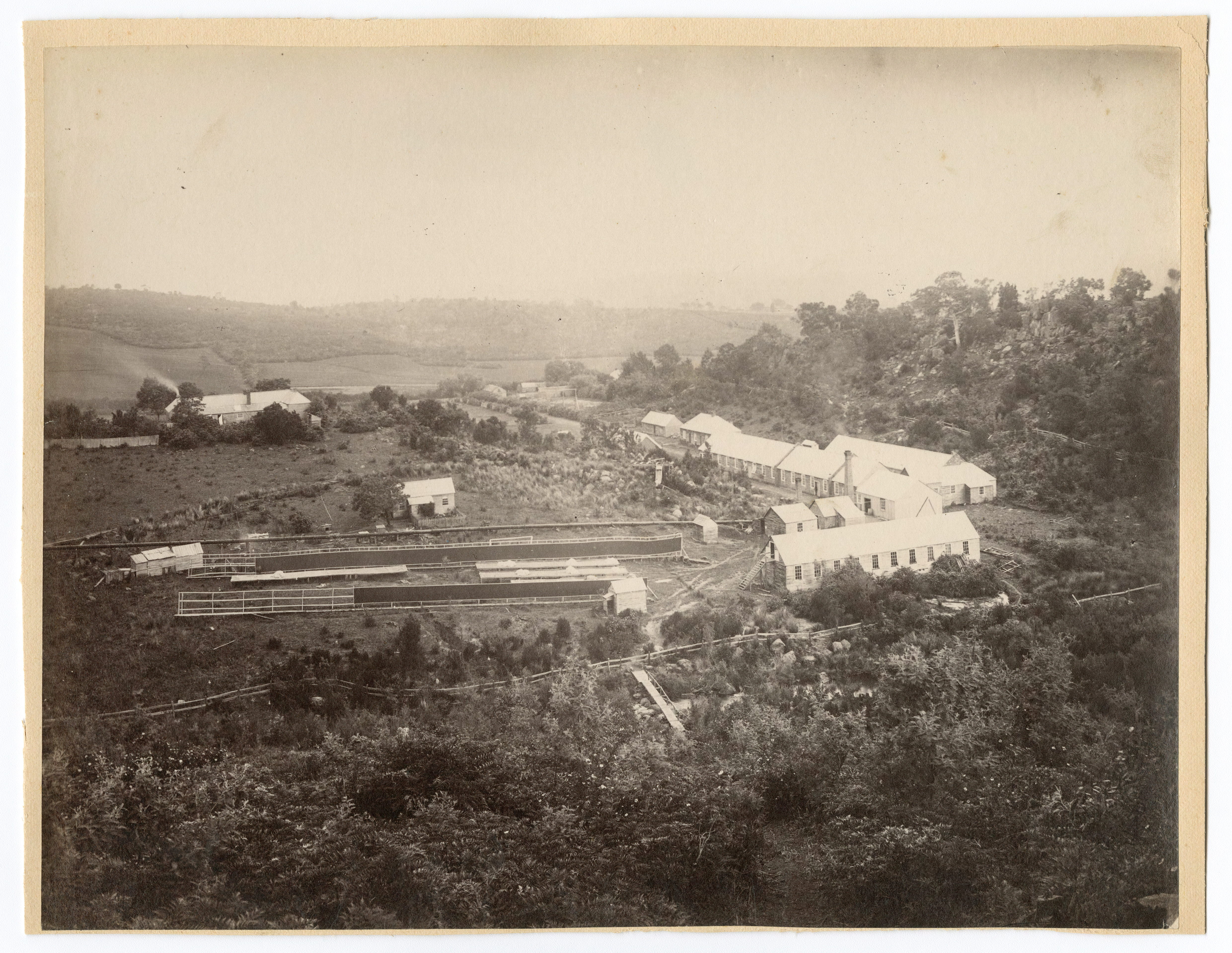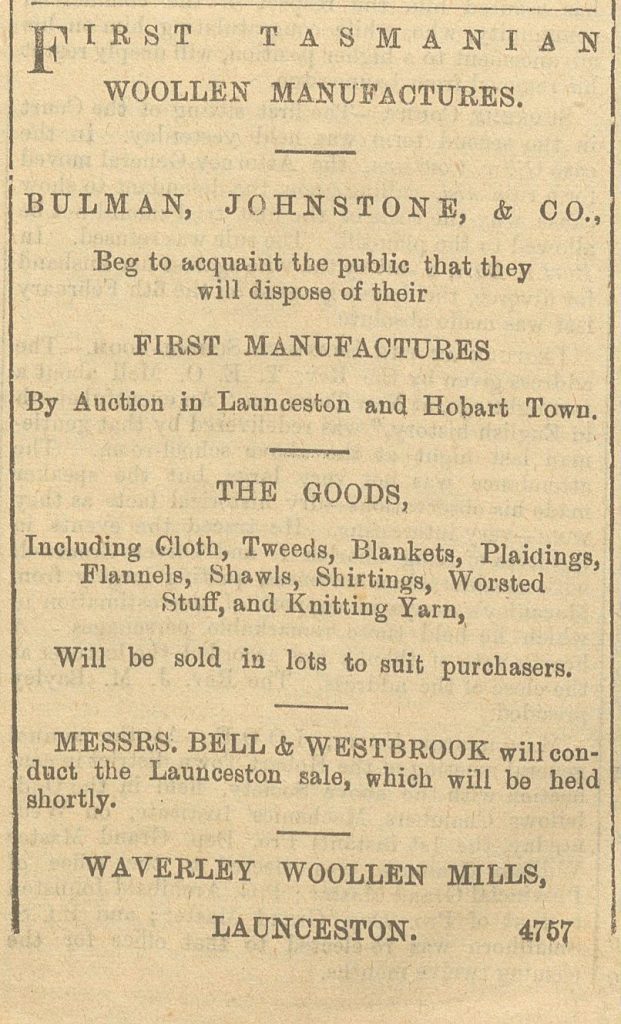The Race to a Thousand Pounds: Unravelling Tasmania’s Woollen Industry (Part One: In the North)

This blog is one in a series published by the State Library and Archive team that explores in greater depth some of the fascinating stories that we uncovered while researching our current exhibition, Duck Trousers, Straw Bonnets, and Bluey: Stories of fabrics and clothing in Tasmania. These blogs are designed to complement the exhibition, expanding information presented on the story walls to provide more context and other perspectives. This blog, which will be published in three parts, extends the research presented on the “Tale of two Woollen Mills” story wall.
In the North
On the picturesque banks of Distillery Creek stands Waverly Mills, home to one of the oldest continuously operating woollen mills in Australia. While the name ‘Waverly Mills’ may be familiar to the ears of local Tasmanians, to fully understand the story of the woollen mill, we must cast our eyes further afield, to a Scotsman named Peter Bulman.
Born in the 1830s in Edinburgh, Scotland, Peter Bulman spent his youth apprenticed as a millwright on the Scottish Boarders near Harwick. In 1858, the Bulman family left Scotland in search of new opportunities. Settling in the north of Tasmania, the Bulman family took up the trade of farming in Patersonia. It was here that Peter married Miss Agnes Hogarth in 1865, the daughter of a neighbour and local sheep farmer.

In 1871 Peter Bulman directed his attention to the woollen trade. Having heard of the incentive offered by the Tasmanian Government, he set out with the ambition to open a factory capable of producing a variety of woollen products. It was noted that Peter Bulman was:
“a man of considerable engineering ability, he soon began to look around him in the island colony for some means of carrying his active skill to some important practical use.”
‘Death of Mr Peter Bulman’. The Daily Telegraph, 2nd March 1896, p.3.
Such a venture was not one for the faint-hearted, for it involved importing equipment from overseas, hiring experienced labourers, and raising the capital to fund it all. It was reported in the Daily Telegraph many years after Waverly Mills had been established that even some of Bulman’s closest friends had advised him against independently funding this venture. However, it appears that this advice did not deter Peter Bulman from his decision:
“He paid a visit to Distillery Creek where he at once saw that a wonderful amount of water power was running to waste, and lost no time in making up his mind to turning it to good account.”
‘Death of Mr Peter Bulman’. The Daily Telegraph, 2nd March 1896, p.3.

In the 1860s and 70s, the Tasmanian Government were eager to support the growth of local industry and production by offering a £1000 incentive to the first person or company that produced a variety of woollen items to the combined value of £1000. The guidelines for fulfilling these conditions were not clear as it simply stated that to be deemed successful you must meet the satisfaction of the Governor of Council. This left the act open to interpretation which would later be the cause of much debate and conflict.
After securing a 99-year lease for a parcel of land fronting distillery creek, Bulman approached the Governor General, asking them to specify the exact conditions of the £1000 incentive as offered by the government. With all conditions of the incentive specified, Peter Bulman set out for Scotland in January 1872.
Bulman spent a few months travelling through Scotland, gathering information, and conversing with the local manufacturers. It was during this time that he made acquaintance with the Johnston family in Selkirk. David and Archibald Johnston were knowledgeable across all areas of the woollen trade and production. Since the ambitions of both Bulman and the Johnstons aligned, a partnership was formed and arrangements were made to transport their family and machinery to the northern shores of Tasmania.
Bulman set out for the journey home, arriving in Tasmania in March of 1873. He steadily began preparations for the arrival of the Johnston family; building the factory as well as residential cottages to house the factory employees and their families.

Once the Johnston Family arrived in Tasmania, the woollen mill undertook a rapid progression. Responsibilities were split equally amongst all partners, with Mr Bulman handling all commercial and outside business and each Johnston brother overlooking and managing a different area including the spinning, carding, and weaving departments.
On 13th of May 1874 Mrs Agnes Bulman placed the first piece of wool on the machinery and thus production began.

Over the next few months their production grew, as they hired local families to keep up with the demand. Just three months after placing the first piece of wool, Waverly Mills had produced an array of goods including cloth, tweeds, yarns, stockings, flannel, and blankets. With their first trip to auction on the 22nd of August 1874, they spent time preparing their stock to ensure that each garment was top quality,
“the Waverly Mills all has been all been bustle during the past week in preparing for sale, and both masters and men have been at work pretty well day and night”
‘First sale of the first woollen good from the first woollen manufactory in Tasmania,’ The Cornwall Chronicle, 21st Aug 1874, p.2.

‘First Tasmanian Woollen Manufacturers’ The Mercury, 4th July 1874, p.1.
When the auction day arrived, the town was abuzz at Messer’s Bell and Westbrooks Mart. Each item would be sold in lots to ensure that everyone had the opportunity to purchase as little or as much as they pleased. In total the Waverly Woollen Mill made a grand total of £1,041 after commissions with some even noting the event as a ‘red letter day’ to be remembered for generations to come.
To be continued….
References
Tasmanian Archives
- Tasmanian Archives: Register of Marriages in all districts, RGD37/1/24 no 362
- Tasmanian Archives: Photograph – Distillery Creek, Waverley, Tasmania, LPIC50/31/1/28
- Tasmanian Archives: Map – Dorset 57 – parish of Patersonia, diagram from actual survey in vicinity of Patersonia includes Ringarooma Road and various landholders – surveyor John Hurst landholders BULMAN J, BULMAN P, HOGARTH W G, ALLISON J, AF396/1/533
- Tasmanian Archives, Launceston Manuscript collection: Photograph – Early view of Waverley Woollen Mills, Launceston, Tasmania. LPIC147/7/198
- Tasmanian Archives, Launceston Manuscript Collection: Photograph – Postcard – Section of carding department, Waverley Woollen Mills, Launceston, Tasmania. Spurling photo. LPIC147/7/192
Newspaper Articles
- ‘The Tasmanian Times’. The Tasmanian Times, 10th Nov 1869, p. 2.
- ‘The Launceston Times’. The Cornwall Chronicle, 2nd Oct 1871,p.2
- ‘Launceston Examiner’ Launceston Examiner, 21st July 1874, p.2.
- ‘Bonus to manufacturers’ Weekly Examiner, 25th July 1874, p.12.
- ‘The Waverly Woollen Factory’. Launceston Examiner, 4th Aug 1874, p. 2.
- ‘The Waverly Woollen Mills’. The Tasmanian, 8th Aug 1874. P.9.
- ‘First sale of the first woollen good from the first woollen manufactory in Tasmania’. The Cornwall Chronicle, 21st Aug 1874, p.2.
- ‘First sale of Tasmanian woollen goods’. Launceston Examiner, 25th Aug 1874, p.2.
- ‘Death of Mr Peter Bulman’. The Daily Telegraph, 2nd Mar 1896, p.3.
- ‘Mr Peter Bulman’. Launceston Examiner, 2nd Mar 1896, p.5.
- ‘Weaving Woollens, First Tasmania Story of Establishment Government’s £1,000 Bonus’. The Mercury, 1st July 1929, p.10.


Huzzah!! Love it
Fantastic information, looking forward to learning more about the wool mills of Tasmania